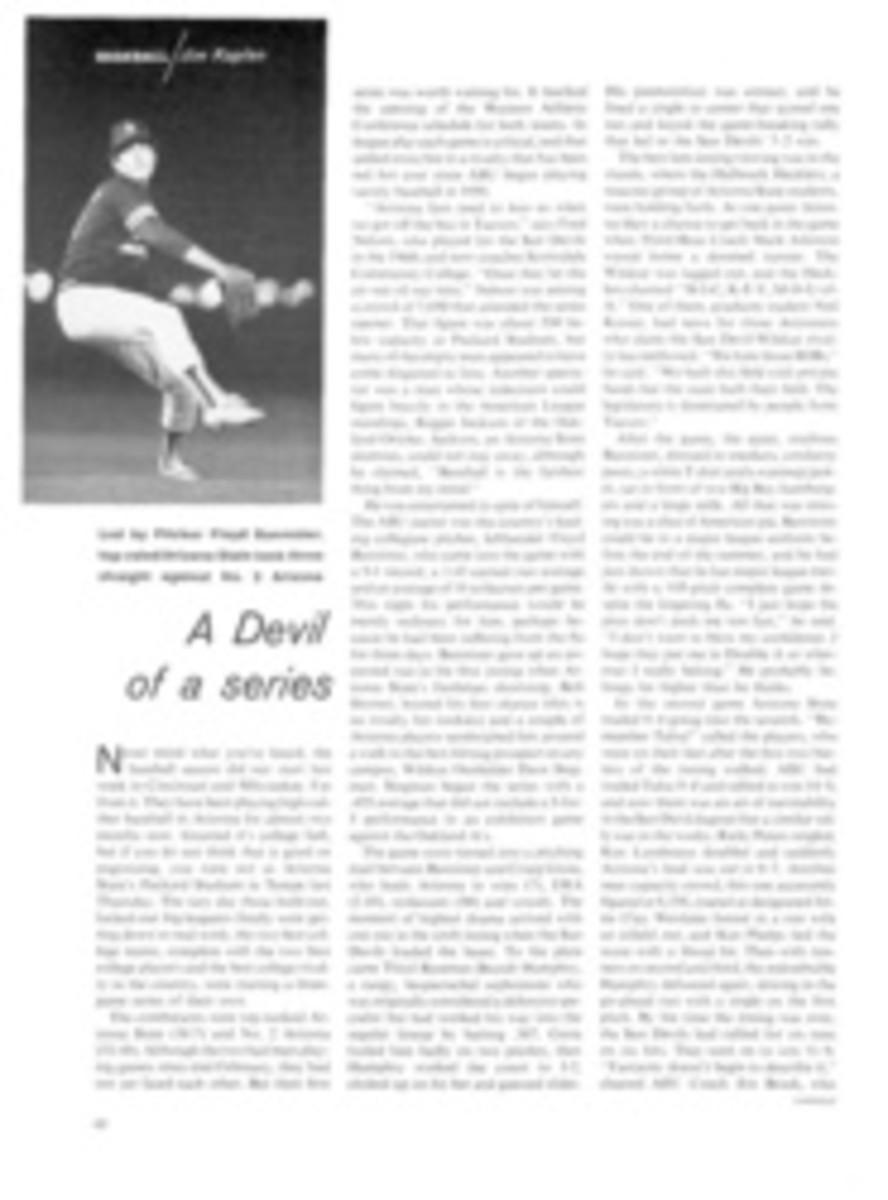
MEMOIRS OF PIONEERS WHO HIKED ALL 2,023 MILES OF THE APPALACHIAN TRAIL
Forty-six people who walked every one of the 2,023 miles have contributed their diaries and recollections to Hiking the Appalachian Trail (Rodale Press, Inc., Emmaus, Pennsylvania, $39.95). It is an astonishing work that would be indispensable for hikers, except that it is too heavy to carry and too long to memorize. The two handsome volumes weigh seven pounds. That is more than the weight of a modern pack frame.
The work includes a brief history of the trail, recounting how in 1921 Benton MacKaye proposed its general outlines in an architectural journal; how scattered regional hiking and climbing clubs were organized to connect existing wilderness trails; and how volunteer workers created a rough path that ran from Mount Katahdin, Maine, to Mount Springer, Ga.—generally clear, mapped, measured, blazed with trail markers or paint and spotted with some 270 shelters. In recent years the Forest Service and agencies of the 14 states through which the trail passes have lent assistance, but most of the surveying, brush cutting, lean-to building (and negotiation with landowners for permission to cross their property) was accomplished by unpaid outdoor enthusiasts. In the process they tapped some wonderful wild scenery otherwise inaccessible, created a national treasure and left the most remarkable example of private cooperative enterprise in conservation history.
Myron Avery, who has been president of the Appalachian Trail Conference for 21 years, was the first to make it from one end of the trail to the other, pushing a measuring wheel much of the way—but he did it in many short trips, some seven years apart. The first to cover the entire distance in one continuous walk was Earl Shaffer, who in 1948, just out of the Army, made the trip in 124 days. The most celebrated pioneer was Mrs. Emma Gatewood, who was 68 when she completed the first of her three full-distance hikes in 1955. Reading about this fierce old lady prompted other outdoorsmen to traverse the trail.
There is a fundamental difference between the reports of early hikers and the day-by-day (or almost hour-by-hour) accounts of contemporaries. That of Dorothy Laker runs to 213 pages. It is a book in itself. Four other diaries and memoirs are nearly as long. A Florida salesgirl, she planned to walk the trail with a companion who, however, backed out at the last minute. She started alone in the rain on April 18, 1957, "discouraged and feeling conspicuous." Her prose is honest, unadorned and uncomplaining and sometimes communicates with genuine power the incredible loneliness of her five-month journey. She was frightened by several bears, saw any number of deer, had a harmless encounter with a porcupine, another with a skunk, and caught glimpses of perhaps half a dozen raccoons and one moose. Sometimes she had the company of fellow hikers but only for short distances—usually she was all by herself. Near the Tennessee border, a young man came running out of the woods and she tried to strike up a conversation with him but he kept on running.
Always in a hurry, if she was to reach Katahdin before the snow closed in, she was oppressed with "the feeling I was passing wonderful scenery and hardly seeing it at all." She was drenched by 40 days of rain. In the steep and narrow climbs in Vermont, "at one point I lay down on the rocks and cried." When she was 255 miles from Katahdin, "I kept noticing how much my feet hurt." But then with rest and a good camp, "the lightning bugs began to sparkle and the frogs in the lake began to sing and I was charmed out of my evil mood.... This perfect, bowl-shaped hollow, scooped out of the mountainside, rimmed with conifers, with a saucer of blue-green water below me that rippled with the wind and slapped the shore so loudly, I could hear it...the charm and beauty of the trail affected me so much that I never wanted to leave it."
Raymond Baker was inspired to make the walk at age 56 after watching the hikers on the Appalachian Trail who passed his New Jersey dairy farm. Howard Bassett made the long walk in 1968 following his retirement after 39 years with a telephone company. James Shattuck, age 51, undertook the first winter trip. "What a lonely place is a national forest in winter," he wrote on March 3, 1967, on a 4,040-foot mountain in Virginia, "wind howling, no sign of civilization, and mountain ranges on both sides...."
Why did they do it? In the early years before the trail was well known, people who observed hikers trudging along often asked, "Are you working for the government?" By 1970, portions of the trail were frequently crowded, shelters were often filled (if they had not been wrecked by vandals) and serious hikers sometimes were inconvenienced by drinking parties, pot parties, nudist hikers and military exercises. Most of the long-distance hikers seemed to feel that tramping from Georgia to Maine in one unbroken walk was a way of not enjoying the trail, that it required too heavy a pack, too much planning for supplies, too fast a pace through the most pleasant areas. But the effort was worth it—still is—because of the solitary self-testing that takes place.
Walking the Appalachian Trail is something to do, not read about.

